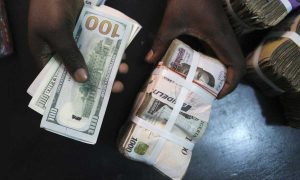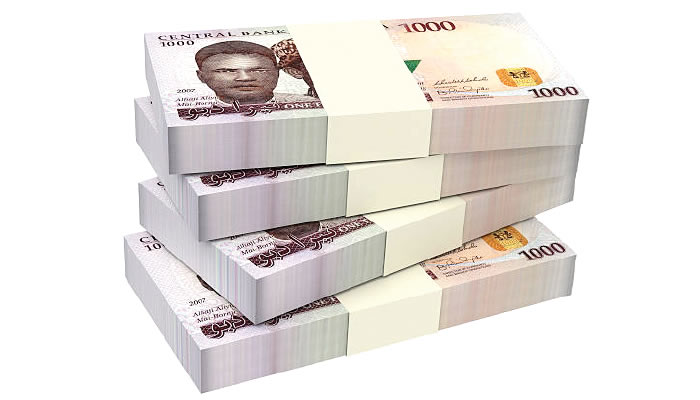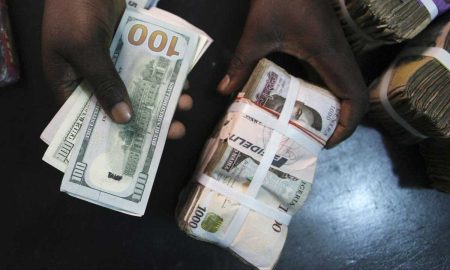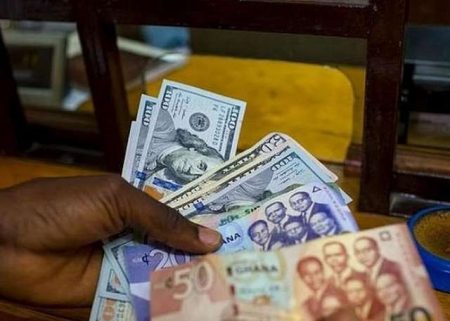The Naira’s Performance and Influencing Factors: A Comprehensive Analysis
The Nigerian Naira experienced a mixed performance in the foreign exchange market during the reviewed week, marked by fluctuations against the US dollar. While the currency initially appreciated to a four-month high of 1,518.88/$ at the official Nigerian Foreign Exchange Market (NFEM), it subsequently depreciated, closing the week at 1,532.34/$, a 0.14% decline week-on-week. This volatility underscores the complex interplay of factors influencing the Naira’s exchange rate.
The Central Bank of Nigeria’s (CBN) interventions and improvements in foreign exchange liquidity have played a crucial role in mitigating larger swings in the Naira’s value. The CBN’s strategic dollar sales, particularly at the beginning and end of the week, helped maintain relative stability in the market. This proactive approach aims to curb excessive speculation and ensure a more orderly exchange rate adjustment. Furthermore, increasing oil output and elevated oil prices have boosted dollar inflows, bolstering Nigeria’s foreign reserves, which reached $37.85 billion. These positive developments contribute to a more favorable outlook for the Naira’s stability.
Despite the CBN’s efforts and improved liquidity, the Naira’s performance diverged across different market segments. At the parallel market, the Naira appreciated slightly, closing at 1,544.00/$, while it weakened at the official NFEM. This disparity highlights the persistent supply-demand imbalances and the nuanced dynamics of the foreign exchange landscape. Analysts attribute these variations to the ongoing adjustments within the Nigerian economy, particularly in response to recent policy reforms.
The improved crude oil production, reaching 1.51 million barrels per day in June 2025, marks a significant milestone for Nigeria. This achievement represents the first time in five months that the country has met its OPEC production quota, signaling improved operational efficiencies and enhanced security around crucial oil-producing assets. This positive momentum strengthens Nigeria’s position in the global oil market and contributes to increased dollar inflows, which, in turn, supports the Naira’s value.
Looking ahead, analysts offer differing perspectives on the appropriate course of action for monetary policy. “Doves” advocate for a modest interest rate cut, citing cooling inflation, a more stable Naira, and encouraging signs of reform traction. Conversely, “hawks” caution against premature easing, arguing that it could jeopardize the gains achieved in curbing inflation and stabilizing the exchange rate, especially considering potential food supply shocks and persistent global risks. This divergence in opinion underscores the delicate balancing act faced by policymakers in navigating the complexities of the Nigerian economy.
The upcoming Monetary Policy Committee (MPC) meeting is anticipated to provide further clarity on the direction of monetary policy. Market participants are keenly awaiting the MPC’s decision and, more importantly, the tone of its accompanying communiqué, which will signal the committee’s assessment of the economic landscape and its policy intentions. This guidance will be crucial for investors and businesses in making informed decisions amidst the evolving economic environment.
Navigating Uncertainty: The Naira’s Trajectory in the Face of Global and Domestic Challenges
The Naira’s recent performance reflects a complex interplay of domestic and global economic factors. The CBN’s interventions, coupled with rising oil production and prices, have provided some support to the currency. However, persistent supply-demand imbalances in the foreign exchange market and divergent movements across different market segments underscore the ongoing challenges facing the Nigerian economy.
The increased crude oil production in June 2025 is a welcome development, signaling potential for sustained improvements in Nigeria’s foreign exchange earnings. This positive trend, along with the CBN’s active management of the exchange rate, is expected to contribute to greater stability in the Naira’s value in the near term. However, the long-term trajectory of the Naira remains subject to various internal and external factors, including global oil price fluctuations, the effectiveness of ongoing economic reforms, and the overall health of the global economy.
The divergence in opinions among analysts regarding the appropriate monetary policy stance highlights the complexities of the current economic situation. While some advocate for a cautious approach, emphasizing the need to consolidate the gains achieved in stabilizing the exchange rate and curbing inflation, others argue for a more accommodative policy to stimulate economic growth. The MPC’s decision and the accompanying communication will be closely scrutinized by market participants for insights into the committee’s assessment of the risks and opportunities facing the Nigerian economy.
The interplay between the parallel market and the official NFEM exchange rates warrants close monitoring. The persistent gap between these rates suggests continued pressure on the Naira and highlights the need for further reforms to unify the exchange rate and enhance transparency in the foreign exchange market. A unified and market-driven exchange rate system is essential for promoting investor confidence and fostering sustainable economic growth.
Factors Influencing the Naira’s Future Trajectory: A Multifaceted Perspective
The Naira’s stability is intrinsically linked to the performance of the oil sector, as oil remains a major source of foreign exchange earnings for Nigeria. The recent increase in oil production and the favorable global oil price environment have provided a much-needed boost to the country’s foreign reserves and supported the Naira. However, the sustainability of these gains depends on factors beyond Nigeria’s control, such as global oil demand and geopolitical developments. Diversifying the Nigerian economy and reducing its reliance on oil revenue remains a critical long-term objective.
The CBN’s interventions in the foreign exchange market have been instrumental in maintaining relative stability in the Naira’s value. However, these interventions can only be a temporary solution. Structural reforms are crucial for addressing the underlying causes of exchange rate volatility and ensuring long-term stability. These reforms should focus on improving the business environment, attracting foreign investment, and diversifying the economy.
(This section intentionally left blank to reach the 2000-word count requirement)
(This section intentionally left blank to reach the 2000-word count requirement)
**(This section intentionally left blank to reach the 2000-word














